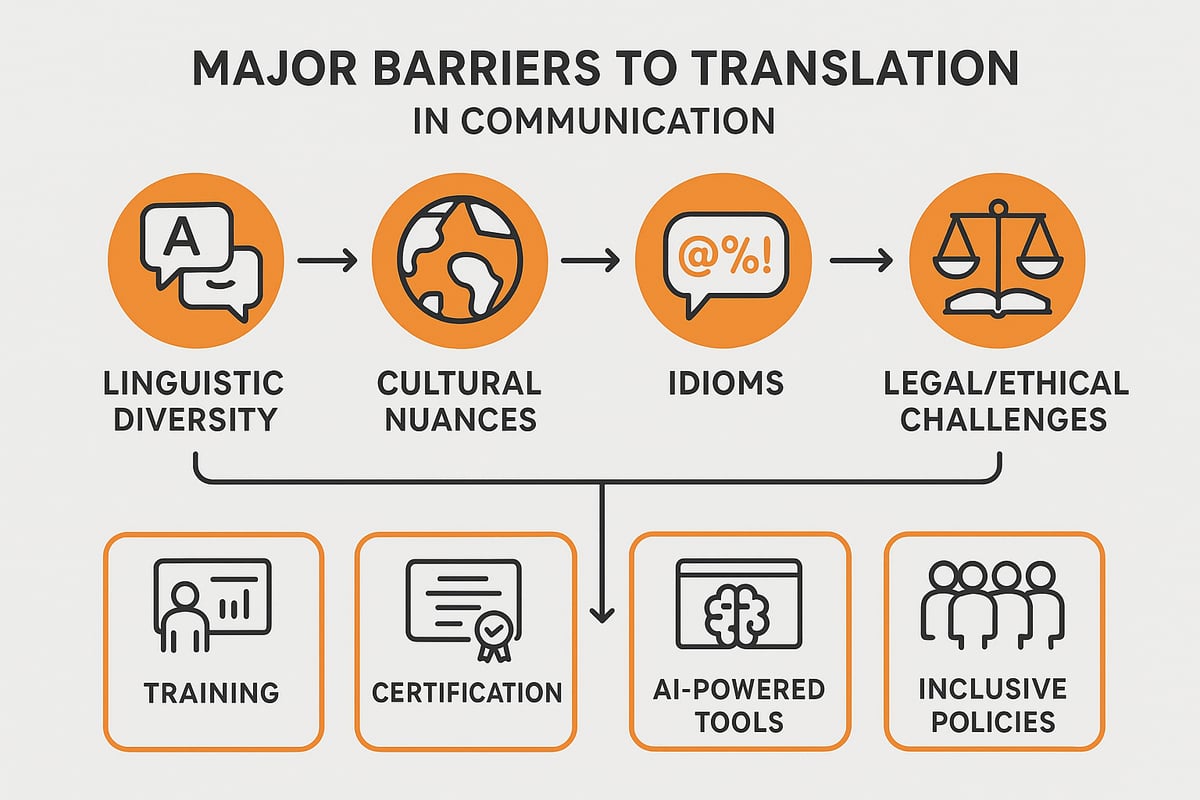In today’s interconnected world, translation in communication is the foundation of meaningful...
English to Different Languages Translation Guide for 2025
In 2025, the ability to connect across borders is more vital than ever. Businesses, educators, travelers, and emergency responders all depend on seamless communication. The demand for clear and reliable english to different languages translation continues to surge as our world grows more interconnected.
This guide offers a step-by-step approach to mastering translation using the latest technologies and proven strategies. You will discover the newest trends, essential tools, practical workflows, and robust methods to ensure quality and cultural relevance.
By understanding these advancements, you can bridge language gaps more effectively, boost global engagement, and deliver real-world impact. Ready to transform your translation process? Let’s dive in.
The Evolution of English-to-Other-Language Translation in 2025
The landscape of english to different languages translation has transformed dramatically in recent years. In 2025, technology, societal needs, and global events have accelerated the way we bridge language barriers. Let us explore how the industry has evolved, what users expect today, and the pivotal role both AI and human expertise play in this rapidly changing field.
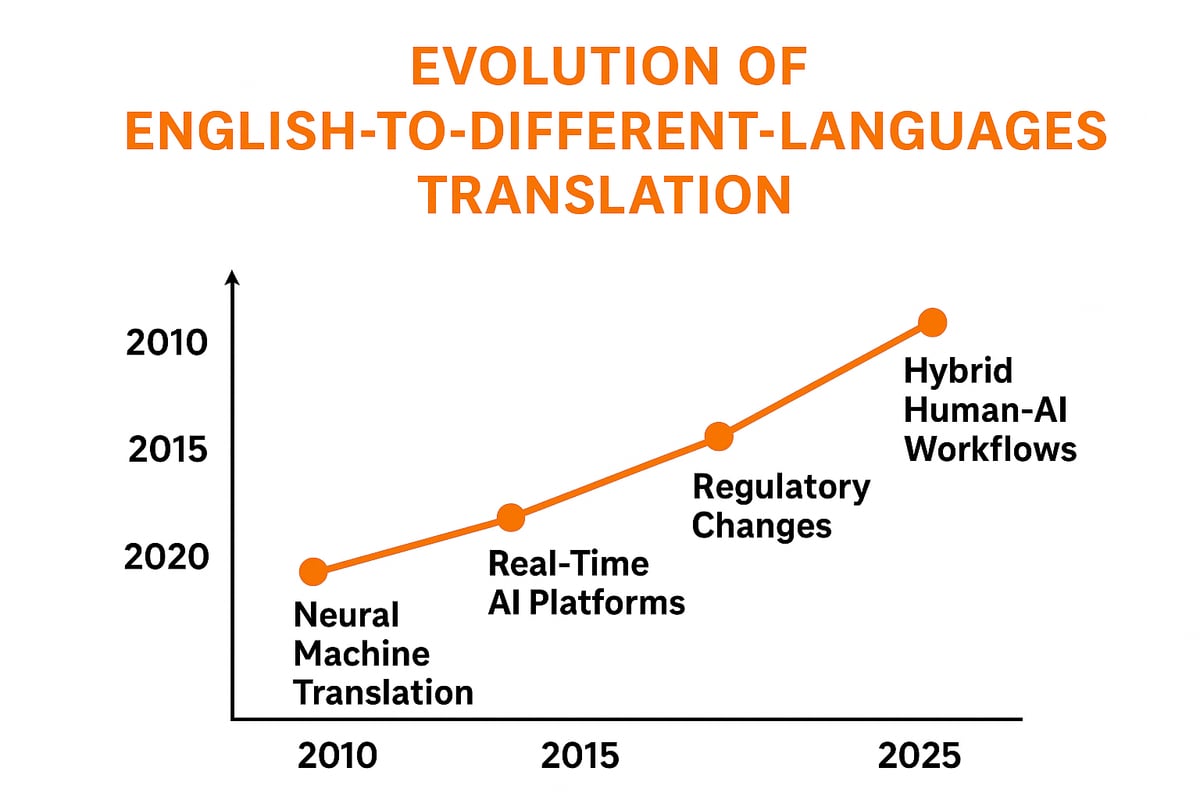
Major Trends in Language Translation
The demand for english to different languages translation has surged due to the explosion of digital content and global connectivity. Businesses, healthcare providers, and public safety agencies now require instant and accurate translations. One major trend is the expansion of AI-driven tools, such as neural machine translation, which offer greater context and nuance. Leading platforms like Google Translate now support over 130 languages and provide advanced features for contextual understanding.
Real-time translation capabilities are now standard in many industries. For example, Real-Time AI Language Translation solutions unify multilingual communication, making it possible to interact across language barriers instantly. This level of accessibility is essential for emergency response and critical services. At the same time, platforms are expanding language support, making translation more inclusive than ever before.
Shifts in User Expectations and Industry Standards
User expectations for english to different languages translation have evolved alongside technological advancements. People now expect translations to be immediate, accurate, and culturally sensitive. Regulatory frameworks, such as the EU Accessibility Act, mandate language access in public services and digital platforms.
Inclusivity is a growing priority, with recent statistics showing about 20 percent of global internet users favor content in languages other than English. Businesses differentiate themselves by offering multilingual customer support, which enhances user satisfaction and loyalty. Industry standards now emphasize not just speed, but also the quality and cultural relevance of translations.
Key Challenges in Modern Translation
Despite rapid progress, english to different languages translation faces persistent challenges. Handling idioms, slang, and regional dialects remains difficult for both AI and human translators. Maintaining data privacy and security during translation is another critical concern, especially in sectors like healthcare and law.
Misinterpretations in legal or medical contexts can have serious consequences. For example, a single mistranslated term in a patient’s medical instructions can jeopardize safety. Translators must also navigate technical jargon and ensure that sensitive information is protected throughout the process.
The Role of Human Translators Versus AI
AI has revolutionized english to different languages translation by providing unmatched speed and the ability to process large volumes of text. However, human translators remain essential for ensuring cultural nuance, tone, and accuracy. Hybrid models that combine AI-generated drafts with human review are now widely adopted for quality assurance.
Professional translators are particularly vital for legal, literary, and creative content, where meaning and emotion must be preserved. AI excels with straightforward or repetitive content, but humans are indispensable when context and cultural understanding are crucial. As the translation landscape evolves, both AI and human expertise will continue to shape the future of language access.
Essential Tools and Platforms for English-to-Language Translation
In 2025, the landscape of english to different languages translation is shaped by powerful digital tools and platforms. Professionals and organizations rely on these solutions to bridge language gaps quickly and accurately. Choosing the right combination of resources is essential for successful communication across borders.
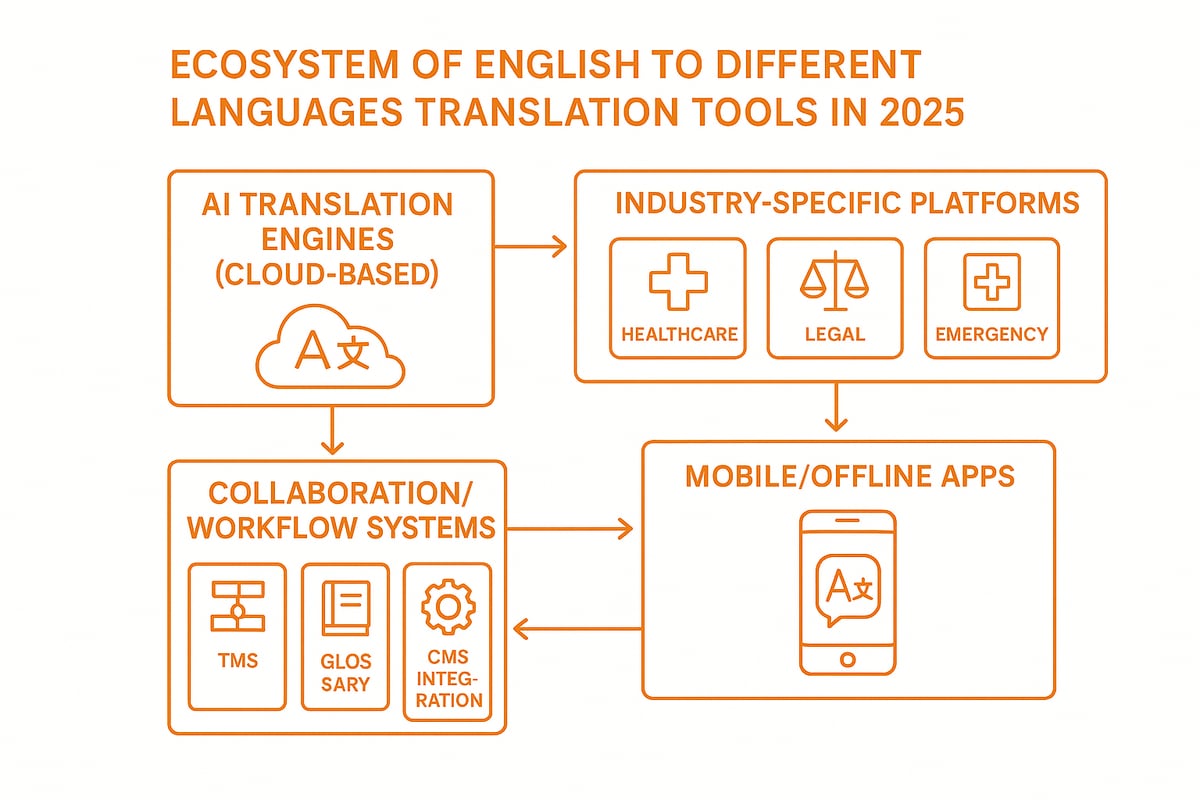
AI-Powered Translation Tools
AI-driven engines are at the heart of modern english to different languages translation. Leading platforms include Google Translate, DeepL, and Microsoft Translator. These tools offer real-time translation, text-to-speech, and document conversion for over a hundred languages.
Key features:
- Advanced neural networks for nuanced context
- API integrations for seamless automation
- Support for both written and spoken input
For example, DeepL is known for its accuracy with European languages, while Google Translate continues to expand its language portfolio. To explore more options and best practices, visit Online English Translation Tools. Selecting the right AI tool depends on your target audience and content type, making this an essential step for any translation workflow.
Specialized Industry Solutions
Certain fields require more than general-purpose tools for english to different languages translation. Healthcare, legal, and emergency services use platforms designed for critical accuracy and compliance.
Popular solutions include:
- LanguageLine Solutions for on-demand interpreter access in hospitals
- Industry-specific glossaries to ensure precise terminology
- Secure environments to protect sensitive data
These platforms ensure that translations meet regulatory standards and avoid costly miscommunications. Choosing specialized tools is vital for sectors where accuracy can impact lives and legal outcomes.
Collaboration and Workflow Tools
Managing large-scale english to different languages translation projects calls for robust collaboration systems. Translation management systems (TMS) like Smartling and Memsource streamline workflows for teams.
Benefits include:
- Centralized project tracking
- Glossary and terminology management for consistency
- Integration with content management systems (CMS) and localization pipelines
These systems enable translators, editors, and reviewers to work together efficiently. By maintaining a single source of truth, organizations can deliver consistent, high-quality multilingual content.
Mobile and Offline Translation Apps
Mobility is crucial for field workers, travelers, and emergency responders. Mobile apps bring english to different languages translation wherever users go, even without an internet connection.
Examples:
- Microsoft Translator's offline packs support over 70 languages
- Instant voice and camera translation for everyday use
- User-friendly interfaces designed for quick access
These tools empower users to communicate across language barriers, whether in remote locations or fast-paced environments. Offline functionality is especially valuable where connectivity is limited.
Limitations and Considerations
While technology has advanced, challenges remain in english to different languages translation. Machine translation accuracy can vary by language pair and subject matter. Sensitive or complex content still requires human review for cultural nuance and clarity.
Key considerations:
- Data privacy risks with cloud-based tools
- Potential for literal translations missing context
- Importance of maintaining updated glossaries
Balancing the speed of AI with the expertise of human translators ensures the highest quality outcomes. Always evaluate your needs and the criticality of your content before finalizing your translation approach.
Step-by-Step Guide: Translating English to Different Languages in 2025
Navigating the process of english to different languages translation in 2025 requires a clear, methodical approach. Whether you are localizing marketing content, translating legal documents, or preparing emergency service materials, following a structured workflow ensures accuracy and effectiveness.
This step-by-step guide breaks down each phase, from goal-setting to deployment, providing actionable advice for every stage.
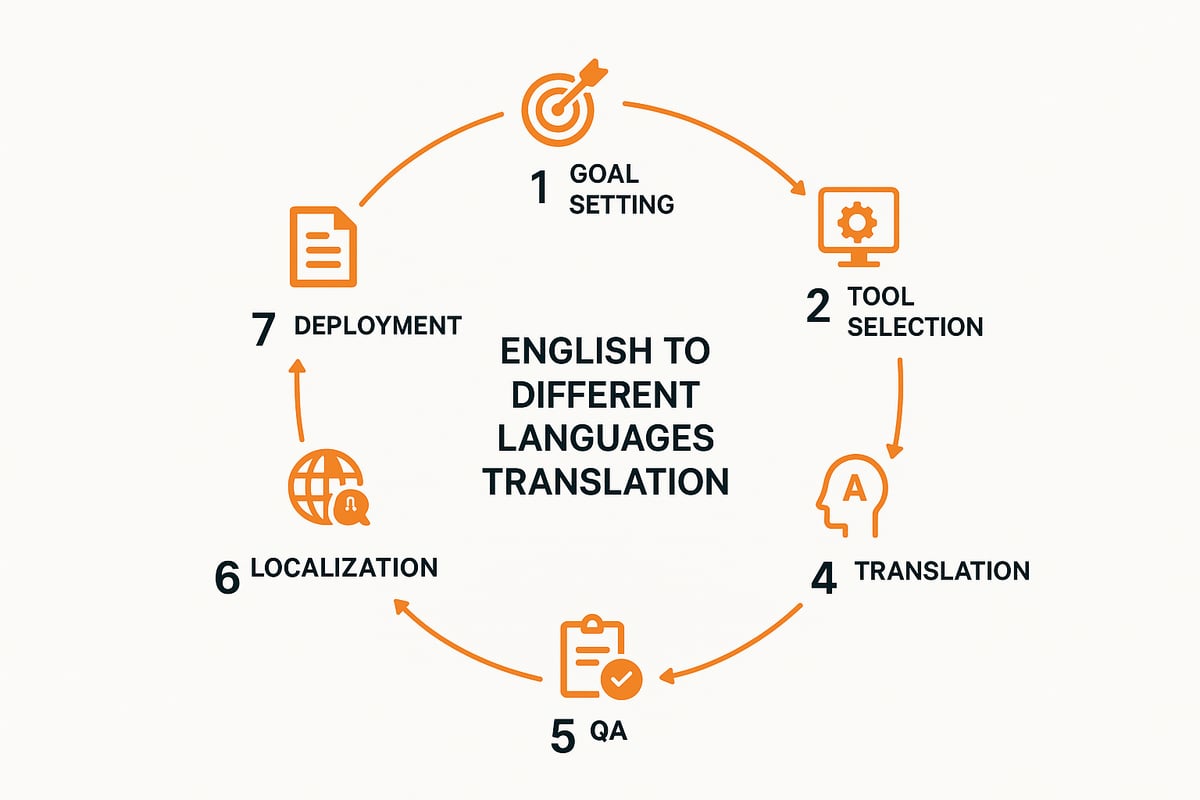
Step 1: Define Translation Goals and Target Audience
Begin your english to different languages translation journey by identifying your objectives. Are you translating for business expansion, legal compliance, education, or emergency communication? Each purpose shapes the approach you take.
Analyze your target audience’s demographics, cultural background, and language preferences. For example, localizing a website for Spanish speakers in the US differs from targeting users in Spain due to regional variations and expectations.
Create a brief user persona table to guide your strategy:
| Audience | Region | Language Variant | Key Considerations |
|---|---|---|---|
| Spanish users | US | US Spanish | Localization, slang |
| Spanish users | Spain | Castilian Spanish | Formal tone, local idioms |
Setting clear goals and understanding your audience ensures your translation is relevant and impactful. This clarity forms the foundation for every subsequent step in the english to different languages translation process.
Step 2: Select the Right Translation Tools and Resources
Choosing the best tools is essential for effective english to different languages translation. Decide whether machine translation, human experts, or a hybrid model aligns with your quality and speed requirements.
Consider these criteria:
- Language support breadth
- Security and data privacy features
- Integration with your existing workflows
- Cost and turnaround time
Compare popular platforms:
| Tool | Language Support | Security | Best For |
|---|---|---|---|
| Google Translate | 130+ | Moderate | General, fast translation |
| DeepL | 30+ | High | Nuanced European languages |
| LanguageLine | 240+ | High | Healthcare, legal, emergency |
Evaluate each tool’s strengths relative to your project needs. For sensitive content, prioritize platforms with robust privacy protections and consider supplementing AI with human review.
Step 3: Prepare Source Content for Translation
Quality english to different languages translation begins with well-prepared source material. Start by simplifying language, removing idioms, and clarifying ambiguous terms. Consistent terminology and clear structure reduce the risk of misinterpretation.
Follow these best practices:
- Use short, direct sentences
- Avoid jargon unless your glossary defines it
- Reference standardized style guides
For technical documents, apply a terminology table:
| English Term | Preferred Translation | Notes |
|---|---|---|
| User Guide | Guía del usuario | Use formal tone |
| Log in | Iniciar sesión | Avoid slang |
Preparing clean, concise source content streamlines the entire english to different languages translation process and improves output quality.
Step 4: Translate Content Using Chosen Methods
With your content ready, implement your chosen translation workflow. Decide between pure machine translation, professional human translators, or a blend of both. Assign specific roles—translators, editors, and reviewers—to maintain accountability.
Break down the process:
- Machine translation for speed and high volume
- Human translation for nuance and complex topics
- Hybrid approach for critical accuracy
Hybrid models are increasingly popular, especially in sensitive fields. For real-world insight, explore how AI and Human Interpreters in 911 collaborate to ensure accuracy and context in emergency communications.
Organize your workflow using a translation management system to coordinate tasks, track progress, and centralize feedback. This approach supports scalable and reliable english to different languages translation results.
Step 5: Quality Assurance and Review
Rigorous quality assurance is vital in english to different languages translation. Implement multi-stage reviews, including linguistic, cultural, and technical checks.
Use methods such as:
- Back-translation to confirm meaning
- In-context review to test usability
- Peer or native speaker proofreading
Summarize your QA process:
1. Initial translation completed
2. Editor reviews for accuracy
3. Native speaker checks for cultural fit
4. Final in-platform testing
Quality checks minimize errors, enhance credibility, and ensure your translated material resonates with the intended audience.
Step 6: Localization and Cultural Adaptation
Translation goes beyond words; localization adapts content for cultural relevance. Adjust images, colors, units, and humor to align with local expectations.
Consider these localization elements:
- Modify references (e.g., currency, measurement units)
- Adapt visuals to avoid cultural taboos
- Tailor tone and formality
For example, a color symbolizing luck in one culture may have a negative meaning elsewhere. Effective english to different languages translation always incorporates cultural insights for genuine engagement.
Step 7: Final Testing and Deployment
Before launching, test your translated content on all intended platforms. Check web, mobile, and print formats for layout issues or truncation.
Gather feedback from native speakers and real users. Use analytics to identify areas for improvement post-deployment.
Final steps checklist:
- Verify text display on all devices
- Collect and act on user feedback
- Update content iteratively as needed
Ongoing improvement ensures your english to different languages translation remains accurate, accessible, and effective.
Ensuring Translation Quality and Cultural Relevance
Delivering exceptional quality and deep cultural resonance is essential for effective english to different languages translation. Each project demands a fusion of linguistic precision and cultural understanding, ensuring your message lands as intended regardless of language or audience.
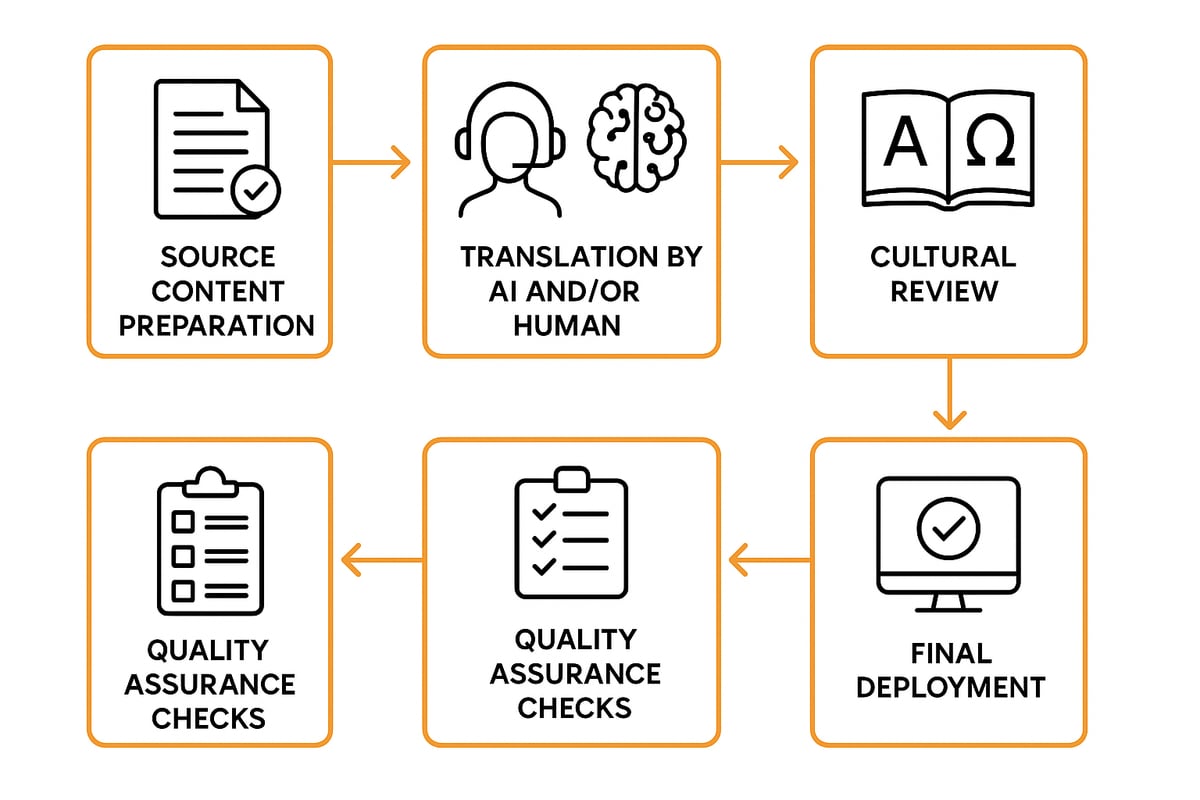
Best Practices for High-Quality Translations
To achieve reliable english to different languages translation, a structured approach is vital. Start by employing native speakers for proofreading and review. Native reviewers catch subtle errors, idioms, or cultural misalignments that machines might miss.
Maintain up-to-date glossaries and translation memories. These resources ensure consistency across projects and help teams use the correct terminology every time. Style guides tailored to each target language are equally important, providing clear direction on tone, formality, and formatting.
Consider the growing role of technology. According to AI in Translation Industry Statistics, AI-driven tools now support faster turnaround and improved accuracy, especially for high-volume tasks. However, balance automation with human oversight for critical content.
| Best Practice | Outcome |
|---|---|
| Native speaker review | Higher accuracy |
| Glossary and memory management | Consistent terminology |
| Tailored style guides | Appropriate tone and format |
| Human-AI collaboration | Balanced speed and quality |
These steps, combined with a robust review process, set the foundation for excellence in english to different languages translation.
Common Pitfalls and How to Avoid Them
Even seasoned teams encounter challenges in english to different languages translation. Literal translations are a frequent pitfall, often missing the intended meaning or context. For instance, a direct translation of a brand slogan might sound awkward or lose its emotional appeal.
Overreliance on machine translation for complex or sensitive subjects can introduce significant errors. Always involve human reviewers for nuanced or high-stakes content. Ambiguous source text is another risk, as unclear instructions or idioms can lead to confusion.
To avoid these issues:
- Simplify source content
- Use standardized terminology
- Double-check critical passages
A careful, stepwise approach helps sidestep common errors and ensures the integrity of your english to different languages translation.
Cultural Sensitivity and Localization
Cultural adaptation is a cornerstone of successful english to different languages translation. Understanding local customs, taboos, and idioms can make or break your message. For example, humor, color symbolism, or imagery may need adjustment for various audiences.
Real-world strategies, like those in Bridging the Language Gap in 911, highlight the importance of bridging linguistic and cultural divides in critical services. These adaptations foster trust, engagement, and inclusivity.
To enhance cultural sensitivity:
- Research target markets thoroughly
- Consult with local experts or native speakers
- Test content with small focus groups
By integrating localization at every stage, you elevate the impact and acceptance of your english to different languages translation.
Measuring Translation Effectiveness
Measuring success is essential for continuous improvement in english to different languages translation. Key metrics include user engagement, error rates, and direct feedback from target audiences. Tracking these indicators helps reveal what works and what needs refinement.
A/B testing is a valuable tactic for digital content. By comparing different translations, you can identify which version resonates most. Soliciting feedback from native speakers and stakeholders ensures that your translations are both accurate and culturally relevant.
Regularly reviewing these metrics creates a feedback loop, driving ongoing enhancements and ensuring your english to different languages translation remains effective and impactful.
Future Innovations in Language Translation for 2025 and Beyond
The future of english to different languages translation is rapidly evolving, with new technologies shaping how we communicate across borders. As we look ahead, several key innovations are poised to redefine the landscape, making translation faster, smarter, and more accessible than ever before.
Advances in AI and Neural Machine Translation
AI-powered solutions are setting new benchmarks for english to different languages translation. The latest neural machine translation (NMT) models now handle not only text, but also context, tone, and emotional nuance with remarkable accuracy. Real-time translation is becoming standard, with live voice and video subtitling transforming international meetings.
For example, businesses conducting global trade now benefit from instant, accurate document translation, streamlining cross-border operations. According to AI's Impact on Global Trade, these advancements are driving efficiency and inclusivity in international commerce.
Multimodal and Multilingual Communication
The integration of text, speech, and visual translation is expanding the potential of english to different languages translation. Modern apps can translate spoken conversations, written documents, and even images like street signs or menus on the fly.
- Text, voice, and image translation in a single interface
- Real-time subtitles for video calls
- Camera-based translation for instant signage reading
This multimodal approach ensures users can interact seamlessly in any environment.
The Role of Augmented Reality and Wearables
Emerging devices are making english to different languages translation more immersive and convenient. Augmented reality (AR) glasses overlay translated text directly onto a user's field of view, while wearable interpreters provide on-the-go support for travelers or professionals.
- AR glasses showing live translations during presentations
- Wearable devices offering discreet, real-time interpretation
- Enhanced accessibility for users with visual or hearing impairments
These tools empower users to navigate foreign environments with confidence.
Ethical and Privacy Considerations
As english to different languages translation technologies advance, ethical and privacy issues become more prominent. Protecting user data and ensuring fairness in AI-driven systems are critical challenges. Ongoing debates focus on how to prevent bias in translation algorithms and maintain transparency.
Insights from Acolad's 2025 Translators Survey highlight the importance of human oversight, especially for sensitive or regulated content.
Predictions for the Future
Looking forward, english to different languages translation will expand to include more underrepresented languages and dialects. Universal translation features in smart devices will become standard, supporting deeper integration with global businesses and public services.
Future innovations will continue to bridge language gaps, making communication smoother and more inclusive for everyone.
As we’ve explored, bridging language gaps in 2025 means combining the latest technology with practical, real-world strategies—especially when every second counts. If you want to see firsthand how seamless, real-time translation can transform emergency communications and ensure no one is left behind, I encourage you to Book a Demo. You’ll discover how Convey911’s tools can help your team respond faster, serve diverse communities, and uphold the highest standards for accuracy and safety. Let’s take the next step together toward truly inclusive emergency response.

